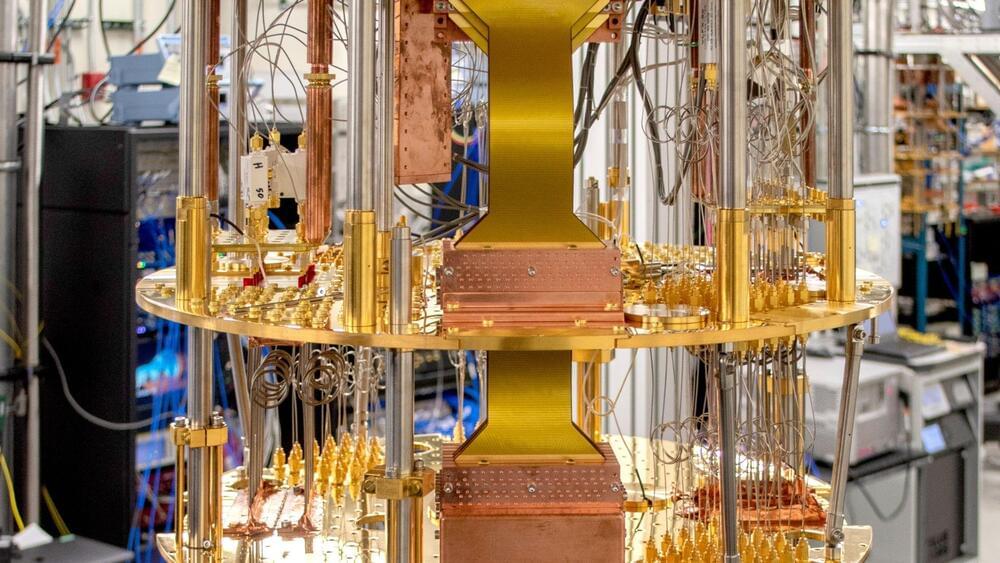IBM has unveiled ‘Osprey’, the successor to its Eagle system, featuring the highest ever qubit count for a quantum processor.


Have you struggled to take your career in data or software engineering to the next level?
After working with hundreds of alumni, FourthBrain’s curriculum and career services staff has developed a framework with key strategies that you can implement today to help you find your focus, showcase your unique skills, and take your ML career to the next level.
FourthBrain graduates who are job seeking increase their salary by an average of $27k and 87% land new jobs within 6 months of graduation.
Watch our session with Dr. Greg Loughnane (Director of Curriculum) and James Van (Director of Career Services).
If you have any questions you can reach us at: [email protected].
Good luck on your journey!

Researchers at UC Riverside are paving the way for diabetes and cancer patients to forget needles and injections, and instead take pills to manage their conditions.
Some drugs for these diseases dissolve in water, so transporting them through the intestines, which receive what we drink and eat, is not feasible. As a result, these drugs cannot be administered by mouth. However, UCR scientists have created a chemical “tag” that can be added to these drugs, allowing them to enter blood circulation via the intestines.
The details of how they found the tag, and demonstrations of its effectiveness, are described in a new Journal of the American Chemical Society paper.


Video surveillance, now viruses.
Duke researchers have captured the first real-time footage of viruses on the move, right before they hijack a cell.
Learn more about the Welsher lab here: https://www.welsherlab.org/
To read the full paper: https://www.nature.com/articles/s41592-022-01672-3
MB01J8TKPYWEHGK.

The test has now validated the startup’s patented design and manufacturing methodology.
A space-tech startup headquartered in Chennai, India, successfully test-fired the world’s single-piece 3D-printed engine.
Elen11/iStock.
Agnikul Cosmos on Tuesday said that Agnilet was test-fired at the Vertical Test Facility, Thumba Equatorial Rocket Launching Station (TERLS), at Vikram Sarabhai Space Center (VSSC), Thiruvananthapuram. The test was supported by ISRO (Indian Space Research Organization) and IN-SPACe, a nodal agency for promoting and regulating space players.

Beating the previous record of 127 qubits.
IBM unveiled its most powerful quantum computer to date at the IBM Summit 2022 on Wednesday. Named “Osprey,” the 433 qubit processor has the largest qubit count of any IBM processor and is triple the size of the company’s previously record-breaking 127-qubit Eagle processor.
“The new 433 qubit ‘Osprey’ processor brings us a step closer to the point where quantum computers will be used to tackle previously unsolvable problems,” said Dr. Darío Gil, senior vice president of IBM and Director of Research.

The scientists said their spacetime simulation “agrees very well with theory.”
A team of physicists used a “quantum field simulator” to simulate a tiny expanding universe made out of ultracold atoms, a report from VICE
Simulating spacetime.
Pixelparticle/iStock.
The scientists conducted the experiment to simulate the early rapid expansion of the universe following the Big Bang. Their work could lead to accurate representations of the universe in future experiments, allowing for the testing of countless models of the early evolution of the cosmos.

Climate change delegates traveling aboard private jets known to release more carbon dioxide emissions have added to the controversy surrounding the United Nations Climate Change Conference (COP27) in Sharm el-Sheikh, Egypt.
Hundreds of environmental activists stopped private jets from taking off from Amsterdam’s Schiphol Airport the day before the conference started last week.